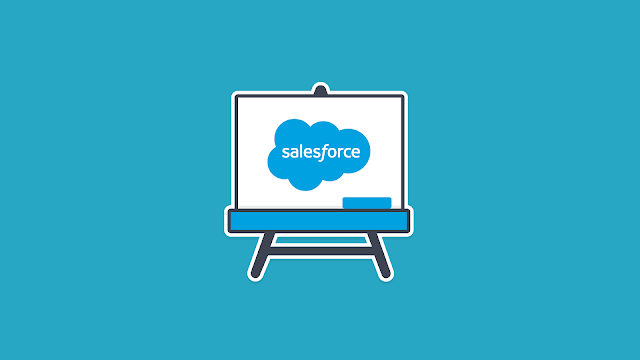Ad Code
Translate
List of 6,000+ Dofollow Commentluv Blogs FREE (Updated 2025)
January 16, 2025
What is Ozempic (semaglutide)? (Updated in 2025)
January 30, 2025
How To Find Suitable Properties In Cyprus? (Updated in 2025)
January 11, 2025
Smart strategies for trading on crypto exchanges
February 18, 2025
Best possible ways to integrate Salesforce with the external database
obaida shaikh
January 12, 2020

Salesforce is a cloud-based software with its headquarters in Los Angeles. They bring customers and companies together through the fundamental principle of transparency, by making a single shared virtual display of the company’s various departments including marketing, commerce, sales, and service – and documents their progress for full-fledged customer satisfaction.
Usually, these uploads are made with the help of middleware tools like ESBs, ETLs or Cloud integration platforms. These tools cooperate via extracting data from heterogeneous or homogeneous platforms, then transform and duplicate it onto the Salesforce database. These middleware tools vary from company to company, but all are equally reliable.
Now, it has become
more easy to upload external data using Salesforce development services. Here are the best ways to using offshore Salesforce development services to integrate with external database:
- Using external legacy systems
If you want to upload external data from platforms like SAP, Oracle, Microsoft SharePoint or DB2 in real-time without creating a copy or a duplicate on the Salesforce platform, then you can do so easily by using Salesforce Connect. You can use an external object without a single line of code and access real-time data without any web service callouts. Through this, you can review the data faster and upon instant demand.
How does this work?
Salesforce Connect remaps the tables in external systems onto an external database and into your Salesforce org. With the help of this, you can view the external objects just the way you view standard objects and can access the data via list views, record feeds, detail pages, custom tabs, record feeds and page layouts. Legacy systems make it easy to fetch data from standard or external platforms and make it available from multiple different sources.
Creating External data source in Salesforce
After entering your name and password onto the Salesforce login page, create a new external database or data source. After filling out the required settings form, you will be directed to a new database. You will then have to validate and synchronize it with SAP. Only after you validate it will you be asked to select the external object that needs to be added to the external data source.
Integrate external objects with standard objects
After configuring the external data source and defining the external objects, all you have to do is use relationship fields to integrate external data into Salesforce. This can be done using the ‘indirect lookup relationship’ feature. This links the ‘Order’ of the external object to the ‘Standard Object’ account.
This can be done using the following method:
1. Define an external custom feed onto your Salesforce account and make it unique.
2. Change the customer ID type from being an ‘External Object’ to an ‘Indirect Lookup Relationship’.
3. Now, choose a related object for the account object and click on next.
You can also access data in real-time using web service callouts. Rather than copying the external data onto your Salesforce account, you can have external access to it using various reliable web services. This integration can be accessed via SAP Netweaver Gateway, MS SharePoint, MS Dynamics NAV and various other data sources without the hindrance of a line of code development.
In case you only have a few data flows to be updated, then you can also do it via Salesforce Connect, or you can Hire Salesforce Developers to do that which makes the process all the easier as this transfer does not need a middleware device or tool. Therefore, it integrates data in real-time with no technical repercussions.
Salesforce has gained its recent upsurge in popularity due to its customer management relationships and using Cloud computing to access multiple data inputs and outputs in one go. Therefore, uploading external data for personal use has become easier and faster for anyone who has an account via following a few steps:
- Go to ‘Setup Home’. Here lie tools to create your external data setup.
- Go to Salesforce Connect External Data Sources.
- Click on the endpoint from which you want to link the data.
- You will now be able to view all the data sources present. Select the data that you want to upload.
- After saving, you will have all your data at a single location.
Featured Post
12 Prominent new technologies and trends emerging in 2025
Khabza Mkhize-
April 02, 2025
Soapie Teasers
Sister Sites
Most Popular
List of 6,000+ Dofollow Commentluv Blogs FREE (Updated 2025)
January 16, 2025
Smart strategies for trading on crypto exchanges
February 18, 2025
Popular posts
List of 6,000+ Dofollow Commentluv Blogs FREE (Updated 2025)
January 16, 2025
Smart strategies for trading on crypto exchanges
February 18, 2025
Footer Menu Widget
Created By Blogspot Theme | Distributed By Gooyaabi Templates

0 Comments